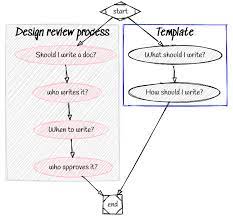Unlocking Cost-Effective Solutions: The World of Cheap Android App Development
The Rise of Cheap Android App Development
In recent years, the demand for mobile applications has surged, leading to a significant increase in Android app development. With the growing popularity of Android devices worldwide, businesses and individuals are looking for cost-effective solutions to create their own apps.
One of the key advantages of Android app development is its affordability. Compared to iOS app development, creating apps for the Android platform tends to be more budget-friendly. This has opened up opportunities for small businesses and startups to enter the mobile market without breaking the bank.
There are several factors contributing to the rise of cheap Android app development:
- Open-Source Platform: Android is an open-source platform, which means developers have access to a wide range of tools and resources for free. This reduces development costs significantly.
- Abundance of Developers: The vast community of Android developers worldwide has led to increased competition, driving down prices for app development services.
- Flexible Development Options: There are various frameworks and technologies available for Android app development that cater to different budget requirements. Developers can choose cost-effective solutions without compromising on quality.
- Rapid Development Process: With efficient tools and frameworks, developers can build Android apps quickly, reducing time and overall project costs.
- Outsourcing Opportunities: Many businesses opt to outsource their Android app development to countries with lower labor costs, further reducing expenses while maintaining quality standards.
While cheap Android app development offers affordability, it is essential for businesses to ensure that quality and functionality are not compromised. Investing in a reliable development team or service provider is crucial to achieving success in the competitive mobile market.
In conclusion, the rise of cheap Android app development has democratized access to mobile technology, empowering businesses of all sizes to harness the benefits of mobile applications. By leveraging cost-effective solutions and strategic planning, companies can reach a broader audience and drive growth in today’s digital landscape.
7 Common Questions About Affordable Android App Development
- Can I develop Android app for free?
- Can Chatgpt 4 build an app?
- Can I make an Android app for free?
- What is the minimum budget for app development?
- How much does Android app development cost?
- How can I get an app developed for cheap?
- What is the cheapest way to develop an app?
Can I develop Android app for free?
Developing an Android app for free is indeed possible, thanks to the availability of various tools and resources that allow individuals to create basic apps without incurring any costs. Platforms like Android Studio provide a free integrated development environment (IDE) for building Android applications, and there are online tutorials and documentation available for beginners to learn the process. While creating a simple app may not require any financial investment, more complex or feature-rich apps may eventually incur costs for additional functionalities, third-party services, or professional assistance. It’s essential to consider the scope of the project and potential expenses involved in order to determine the feasibility of developing an Android app for free.
Can Chatgpt 4 build an app?
ChatGPT-4, while a powerful AI language model, is not capable of directly building an app on its own. However, it can be an invaluable resource in the app development process. It can assist developers by providing code snippets, suggesting best practices, and offering solutions to common programming challenges. Additionally, ChatGPT-4 can help brainstorm app ideas, outline project requirements, and even generate documentation. Developers looking to create a cheap Android app can leverage ChatGPT-4 to streamline their workflow and reduce development time, ultimately contributing to cost savings. However, the actual coding and implementation must be carried out by developers or through automated tools specifically designed for app creation.
Can I make an Android app for free?
When it comes to creating an Android app for free, the answer is both yes and no. While there are tools and resources available that allow individuals to develop basic Android apps without incurring any direct costs, creating a fully-featured and professional app typically requires some level of investment. Free app development platforms often come with limitations in terms of functionality, design options, and customization capabilities. To build a high-quality Android app that meets user expectations and stands out in the competitive app market, it is advisable to allocate a budget for development, whether by hiring developers or investing in premium tools and services.
What is the minimum budget for app development?
When considering cheap Android app development, a frequently asked question revolves around the minimum budget required for app development. The answer to this question can vary significantly depending on the complexity of the app, desired features, design elements, and development resources needed. Generally, the minimum budget for app development can range from a few thousand dollars for simple apps to tens of thousands of dollars for more sophisticated applications. It is crucial for businesses and individuals looking to develop an Android app on a budget to carefully outline their requirements and engage with experienced developers who can provide cost-effective solutions without compromising on quality and functionality.
How much does Android app development cost?
When it comes to Android app development costs, the answer can vary significantly depending on various factors. The cost of developing an Android app is influenced by elements such as the complexity of the app, features and functionalities required, design intricacy, development time, and the expertise of the development team. Additionally, geographical location and whether you choose to work with freelancers, agencies, or in-house developers can also impact the overall cost. It’s essential to consider your budget constraints while aiming for a balance between cost-effectiveness and quality to ensure a successful Android app development project.
How can I get an app developed for cheap?
When looking to get an app developed for cheap, there are several strategies you can consider to keep costs down while ensuring quality. One option is to leverage freelance developers or offshore development teams that offer competitive rates. Additionally, using pre-built templates or frameworks can help reduce development time and expenses. It’s also beneficial to have a clear and detailed project scope from the outset to avoid unnecessary revisions and extra costs later on. By researching different development options, negotiating pricing, and prioritizing essential features, you can achieve cost-effective app development without compromising on functionality or user experience.
What is the cheapest way to develop an app?
When looking for the most cost-effective approach to app development, one of the cheapest ways is to consider building an Android app. The open-source nature of the Android platform offers a range of free tools and resources that can significantly reduce development costs. Additionally, leveraging frameworks and technologies that cater to budget requirements, outsourcing to regions with lower labor costs, and opting for rapid development processes can all contribute to minimizing expenses while maintaining quality standards. It is essential to strike a balance between affordability and quality to ensure the success of your app in the competitive mobile market.




